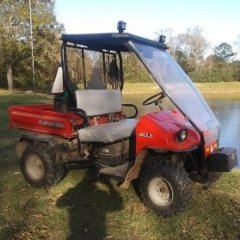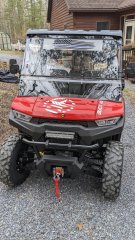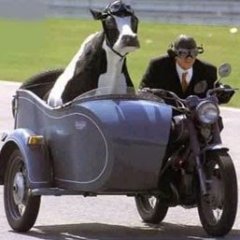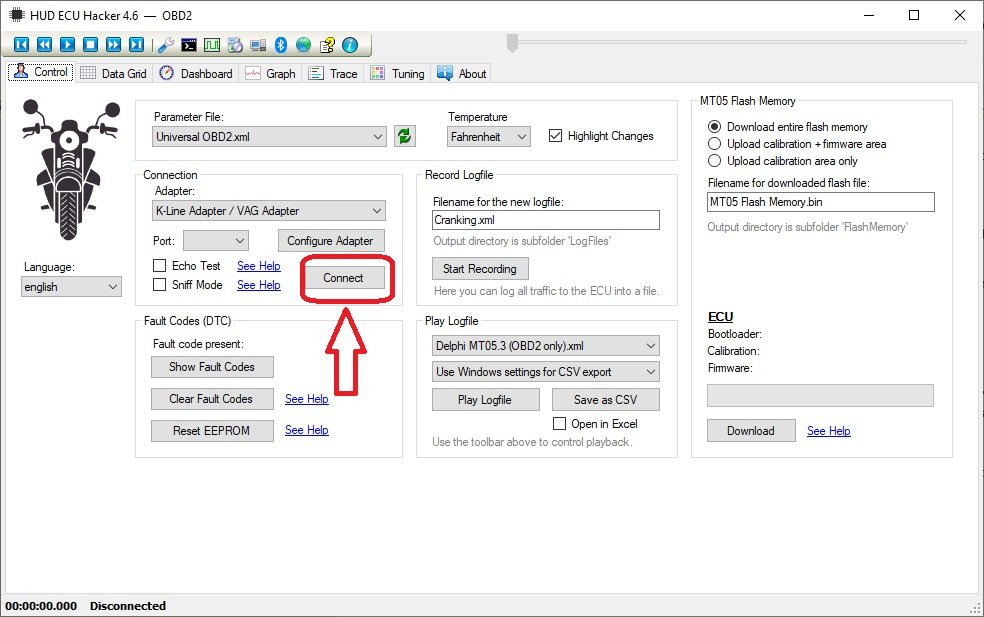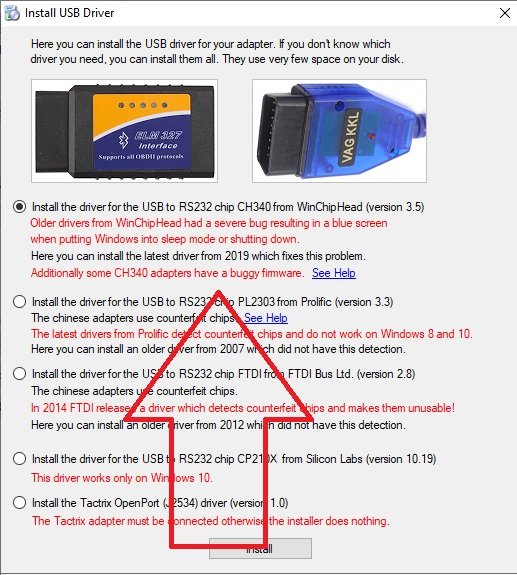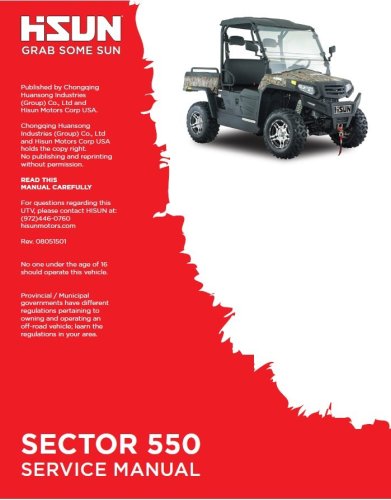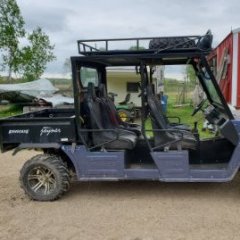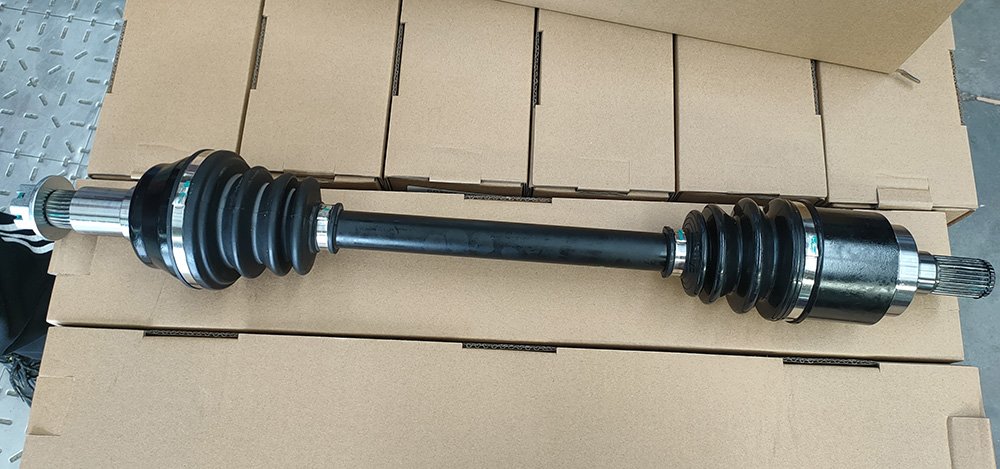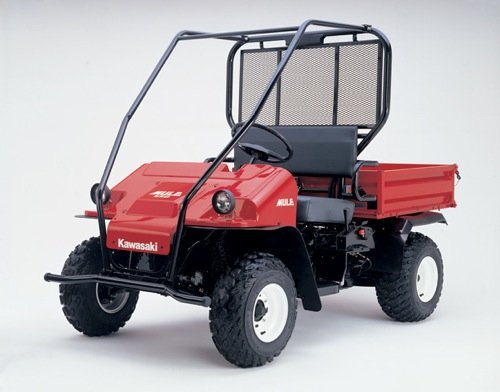Leaderboard
Popular Content
Showing content with the highest reputation since 04/19/2023 in all areas
-
Since I've seen some questions on this I took some pictures and will provide instructions on a valve adjustment for the UT400. This should be the same for the 550's and other various Coleman/Hisun single cylinder models with the cylinder slanted aft. I have seen several people ask of it is really necessary, and read several reports of valves being out of adjustment from the factory. My valves were .004" intake, and .010" exhaust with about 5 hrs on the machine. I've seen different numbers thrown around for factory spec, but I decided to go with 0.005". This is called valve lash. What is is is a gap between the rocker arm and the valve then the camshaft isnt opening the valve. Why does it matter? If it's too large the valve doesn't open all the way, if it's too small the valve dosent close. This can cause valve damage (overheating) as well as loss of engine power (burned fuel is going out exhaust rather than pushing the piston dow). Tools required : 5MM Allen wrench, 10MM box wrench, needle nose pliers, flat feeler gauge set, rags First you need to remove the fan cover on the passenger side. There is a cooling vent hose on the back side, remove the hose clamp and slide it off. From there there are 4x 10mm bolts holding the cover. The forward ones can be accessed from under the seat. Next remove the spark plug from the drivers side. Carefully wiggle the spark plug wire off. Grip it as low as possible and give it a little twisting motion as you pull it off to help free it. Its a tight fit for a socket, but there is a sheet metal wrench in the toolkit that fits it. Unscrew the plug and set it aside. This allows you to spin the motor over freely with no compression to fight. When you reassemble this is a good opportunity to switch to an NGK iridium plug for better performance/less fouling DR8EIX) Next you need to remove the intake and exhaust valve covers. The intake us the forward one. There are 3x 5MM Allen screws to remove. The Exhaust is the rear with 2x 5MM Allen bolts. Both covers have O-Rings instead of gaskets and are reusable. When you remove the rear be careful and use your rags as there will be oil that drips out. Next up we need to spin the motor over to top dead center. Grab each rocker arm and give em a little wiggle up and down. Spin the engine over by grabbing the fan with your other hand. Spin the engine over until both rockers have some wiggle and are loose. Once both rockers are loose slide the feeler gauge in like shown above. Try different feelers as needed to determine your starting spec. You should feel some drag but still be able to move the feeler without too much force. If you need to adjust, use the 10MM wrench to slightly loosen the locknut, then with the correct feeler gauge in place, tighten the top square nut while wiggling the feeler in and out. Once you have it right you need to tighten the 10mm lock nut without moving the square head bolt. Once the lock nut is tight recheck the clearance. That's it, button everything back up and make sure you have it all reassembled before running it again. If you find this helpful give me a thumbs up or comment. If you have any questions or need more help let me know. If there's interest maybe I'll do some more of these4 points
-
Hello to anyone who reads this. I am Jon and I own J&M Outdoor Power, a very small, small engine repair shop. I was approached by Coleman about 6 months ago to become one of their Warranty Centers. I recently received 3 different UT400's and a UT500 all with similar issues. These units range from 2 months to 2 years old. Customers state that the unit(s) was/were running fine, then heard a pop and a loss of power, two would no longer start. The two that would run would not achieve normal operating speed (around 20mph I would say) without redlining the RPMs. I quickly found that the Valve lash on each unit had become too large on some(both intake and exhaust) and too tight on one(just intake). After setting the gaps to .005(I found multiple different people suggesting bigger and smaller gaps, but no definitive Coleman Spec number yet) every unit starts, runs, and achieves top speed without issue. I don't know how many others have come across these issues, and I wanted to get something out on the web for others in the same predicament. Please let me know if you have had similar issues. Edit: I realize that this will not be a fix all solution for this issue, as the oil level and condition should be verified before moving to the valves. Many times improper oil conditions will cause valve lash to change. These units all have good oil and proper oil changes.3 points
-
Are you talking about an electric heater? if yes its likely too much current. There might be 10 amps of available current coming out of the rectifier that isn't already claimed by the ECU and factory lights. 10 amps @ 12V = 120 Watts, which is about what an electric heating pad runs. If you're talking about a fan for a engine coolant based heater it's probably ok. If you have accessories and the running voltage is below 13.5V you have too much stuff attached. If the battery light comes on it means the battery is actively being discharged while running. Stator based charging systems on these things and tractors etc are really meant to power the ECU and factory systems not to provide a lot of extra power for other stuff, it's not like the alternator on a car.2 points
-
2 points
-
The main trick is tilting the front end up. Block the rear wheels and jack up the front end at least a foot. A convenient ditch works well also.....rear wheels in a shallow ditch. The head bleeder screw should be opened. With the engine NOT running, almost fill the radiator (leave some air to avoid a mess) and burp (squeeze the lower hose line before the metal tube at the engine base passenger side floor area). Watch the radiator and the the bleeder. With the radiator "higher" than the head bleeder, the air should be bled and coolant dribble out. Close the bleeder and refill radiator (your clue you displaced the air with coolant) and start the engine. Burp more while running and if you get the circulation going the hoses will warm up. More bubbles should surface at the radiator filler neck. Shut off engine. Open bleeder and release any air in the head. The puke jug needs to be filled about an inch above the full cold line. Use a shop towel as a "seal"and use an air nozzle to SLIGHTLY pressurize the puke tank removing the air from the tubing line to the radiator neck. Then the radiator starts to overflow, a third hand can install the radiator cap. Run the engine and determine the head and hoses are at the close to the same temperature (as in warming up) through out the system. IR temp gun....fairly cheap now....can get real numbers. Scan the radiator, hoses, cylinder and head.....if all close you are done. Recheck fluids when done riding. Recheck the bleeder and top off the puke jug as required.2 points
-
From the look of the picture on the post, I can think of a couple things2 points
-
Its' not a car, this is a motorcycle engine with a small stator charging system. You can't expect to run high wattage accessories like a heater or huge light bars on these things . That will overwhelm the charging system, drain your battery an stop your engine. Could damage the charging system and voltage regulator too. You only have about 10 amps extra to run any accessories including lights.2 points
-
My dealer gave me an electronic version of the service manual and I have sent it to Kingfish. I will see if it will upload here for others to use. I'm not sure if there is a more appropriate way to do this, let me know if there is.. 2015-2017 Service Manual - Sector E1.pdf2 points
-
my Hisun in my Massimo , sold by Tractor Supply, assembled in Dallas, say Made In China on every part of all of it .. Altho it now has multiple Yamaha parts mixed in. lol2 points
-
https://motorcycledoctor.com/wp-content/uploads/2021/08/Valve-Adjustment-HiSun-2.pdf This should do it.2 points
-
Yeah, I adjusted mine multiple times without any luck. I had extended the shifter rod, as mentioned on this board, as well as some videos I watched, and that resolved the shifting issue. Now, after it slips into forward or Reverse, it never slips out. PS: If you go this route, remember to readjust the cable to compensate for the extended shifter. I had to do the adjustment an couple times after extending the shifter and then the problem was resolved.2 points
-
I finally found a service manual in stock and was able to make the adjustments per the specs!2 points
-
Problem was using cheap eBay injector. Bought quality one and hot pipes went away. Running like new.2 points
-
2 points
-
Massimo MSU500 won't shift to low I would check the shift linkage. Adjust it make it a little longer, if it is not long enough it won't shift to low2 points
-
The P.S. has me thinking......you mention "Fuel mist" out of the valve rocker cover. All you should is basically NOTHING at crank speed. Any vapors blown out are from blow by (past the rings) into the crankcase. IF you are OVER FUELING and wetting down the cylinder walls (that is, washing off the oil coating) you will have blow by. Oil coating helps seal the rings. That is why an engine that has set (dried out) and low compression is given a shot of WD-40 or any light oil to seal the rings. This leads to the next thought.....If over fueling, the raw gas will "drain" into the crankcase and dilute the motor oil. Check motor oil level.....too high?....too thin?.....wipe on tissue and sniff the oil....Gassy smell?....will light off with a burn test (soak up some oil on a paper towel and see how fast it starts to burn). Oil basically won't. Diesel will start slowly but take off. Gassy oil....if you value the hair on body parts...hold at a distance with long needle pliers!!!! Gassy diluted motor oil will add to the fuel/air mixture via the breather tube. Similar to a turbo seal failure on a diesel......RUNAWAY even after the injector pump shut down...very bad ending! Drain oil and replace filter....won't get it all (always some oil remains that cannot drain) but will dilute the gas. BONUS: Pulling the vent tube will clean up a mystery RICH run be it carb or FI (everything is correct BUT) after the motor warms up and cooks off the gasoline----sorta like an EGR Evap system. Slop fuel never lights off or barely runs depending on the degree of "slop". You state pulling the injector, the engine runs until it runs out of fuel. ARE you leaving the injector hole OPEN. This will allow lots of fresh air into the cylinder and will light off a rich mixture and then die because no more fuel is injected. ASSUME the ECM is sending the correct pulse width to the injector for now. Injector can hang and "piss" instead of spray. The key is the 14.7/1 air fuel mixture. Too RICH.....runs heavy and then dies at idle. May start to run, but as the leftover UNburned charge gets richer-----labors-----pukes. Too Lean......no start....fuel is there but cannot lite off.....then as it builds up, you get a pop only to be to lean again.....repeats the cycle.....THIS IS HELL ON THE STARTER AND REDUCTION GEARS. This also load the oil with gasoline (unburned). Again the fuel correct, look for a restriction in the air intake (not enough air).....common causes....CRITTERS...mouse house....full of acorns....rag pulled in for a nest, and so on. EASY TEST: Remove the air intake plumbing at the throttle body. Plenty of air now. If runs, check out the air box/plumbing. IF NO RUN....next section. Too much fuel: Time to test the ECM/injector system. ANY BAD input signal to the ECM will make the fuel delivery too much or too little. Pull spark plug. Read the insulator tip color. Just right is a light TAN color. Very WHITE...blistered LEAN. RICH has a BLACK, SOOTY, shiny black/wet black (carbon is fuel soaked). If really black, they might fire outside to the engine block BUT "blowout" under compression even at idle. If not too bad, they might run at idle but when sputter and die when a heavy demand on the ignition system (acceleration) is applied....drop in a new plug for testing to just to reduce the possible list of problems. Pull the connector to the fuel pump (under the pass seat). This is the fuel pump power (from ECM) and fuel level signal. No guessing if you found the right fuse/relay. This will stop the fuel delivery (40 PSI) to injector. Injector will still get pulses. You will shoot a short burst of starter fluid into the air box (plumbing reattached and filter OK). The motor should lite off and run until it is out of fuel. Repeat. Repeat. If works every time, give a double burst when running to "sustain" the run. Repeat. If this works, you have the ECM/input signals to ponder. This gets deep for most. Coolant temp sensor....open circuit RICH. Thinks it is at the SOUTH POLE -40 C. Like a choke for carb. Throttle position sensor.....wrong fuel mix to match the air thru the butterfly valve. MAP sensor/ambient air temp....measures engine load....wrong signal rich and lean. O2 sensor....signal to tell if RICH or LEAN. Has heater circuit to get it up to operating temp. Heaters open (toaster that does not toast). Throw in smashed wires, critters that live the taste of plastic insulation on wires, stick run thru harness, heater shorted to SHARP edged heat shield above the exhaust. More common failures are the MAP/IAT (intake air parameters) and O2 sensor. You got a lot of checks to get down to where the problem is. BTW, the ECM is a DELPHI MT05 small engine unit capable of a twin (2 inputs for the two cylinders individual O2 sensors). Check out web page for specs, pin outs for both the Grey and Black connector (PDF format)....magnitudes better than the "manual" supplied when first built. Only covers the electrical engine management with a generic diagram of the analog input(s) and the outputs like fuel pump, ign coil, etc CHOW.2 points
-
Hello again! I now have a pretty good running Coleman UT400 after a top end rebuild, wet clutch rebuild and a repaired crankcase... ! It plows snow great, but I was also having the jumping out of gear problem, mainly reverse, but a couple times out of forward. I would quickly place it in N and then let the engine idle down and shift again. This worked most of the time. I did some research and found that some have modified the shift linkage. The problem with just adjusting the shift cable is that it really NEEDS more throw, not an adjustment. From what I've read and viewed on the Internet, the linkage arm needs to be about 3/4" longer to gain more throw in both directions. On YouTube, the guy had to remove the shift linkage hole trim and notch the side of the dash to get the shift linkage off the pivot pin. BUT this is NOT necessary. When the "E" clip has been removed and you fish it out of the firewall somewhere, the shift lever is now loose. I had to pop the top of the shift knob off, remove the retaining screw and then heat the lower portion of the knob to get it to come off the lever. Once you have the shift lever loose, push it towards the right to slide it off the pivot shaft. But it won't come off just yet. Use a small pry bar/screw driver and slide the nylon flanged bushing out of the left side of the lever. This lets the lever slide off and get into a "loose" condition and it will twist and come right off without removing the dash trim, that could be a bugger to get back on correctly. Once the lever is off, press out the other bushing so when you're welding on the linkage arm, you don't melt the bushing. I found a piece of scrap metal the same thickness as the lever arm, just over 1/8" thick, close to 3/16". I cut my arm and beveled the edges for better welding. I added a piece just over 5/8" long and kept about a 1/16" gap between the arm and the new piece. Once welded on bother ends, it adds up to just about 3/4" or so. I reinstalled the lever after painting it and did an adjustment on the cable. By the way, it's easier to remove the cable from the bracket on the frame. This gives you more clearance to maneuver in that area with your hands. ALSO, you will need to get a 12" adjustable wrench and slide it over the cable mounting bracket and tweak, to the front, the steel so the cable is pointed upward a bit to now realign with the new longer shift arm lever. There's more than enough metal for the tweak and it will line up perfectly. I now bottom out the shifter on the transmission BEFORE I run out of throw on the shifter... I've tested it just a bit so far and it shifts much better with the longer throw. One of the Coleman authorized repair facilities said that he worked with Coleman to get a new part that's longer by 3/4". He's modified a few and it works perfectly for him. Just doing the cable will just short you on the other end. Here's some pictures of my modified shift lever etc.2 points
-
In order to connect with the ECU we need two cables. The first is a USB ODBII cable. HUD ECU Hacker’s documentation has a lot of different confusing options, but here’s what I went with and managed to get working, the cable is called “VAG KKL” it is a USB to ODB2 cable. It is available from a variety of sources for $10-15. The second thing we need is a “6 pin delphi to ODB2” adapter cable. It is also available for a similar price. In my case I ordered both from ebay, but there are other sources. Once we have our cable in hand we need to find the plug it in on your machine. My personal rig is a Coleman UT400, but the wire location should be similar for all Hisuns. My cable was located under the middle of the seat area. Just inboard of the battery, where the main wire harness split loom runs. The cable is a 6 pin (3x2) with a dust cap. Remove the dust cap and plug in the 6-pin end of the Delphi adapter cable. Note: When I was done, I left the 6-pin adapter connected, and zip tied it so it now runs to in front of the battery for easier access in the future. Next download and install HUD ECU HACKER DOWNLOAD Open HUD ECU Hacker on your PC It should prompt you to choose a driver to install. This particular cable uses the “CH340” driver (First choice on the menu) click to install, once installed hit the X in the corner to go back to the main page Once the driver is installed plug in the USB Cable, and plug the ODB2 end into the 6 pin adapter. The red led on the adapter should light up indicating it has power. Drop down and pick a com port on the main screen, it should show the VAG KKL adapter as a com port. Click connect on the main menu. It will pop up a bunch of fast scrolling text indicating it is connecting. Once connected you can click through the various tabs to see different data sets. The main menu also has the option to show fault codes, clear fault codes, reset the EPROM back to factory. The other function that may be helpful is recording a log file. You can record a log while operating the unit, and come back later and replay it to try to better diagnose what is happening. Within the various pages you will see the reading from each sensor. Sometimes a sensor reading will be off enough to cause running issues, but not enough for the ECU to realize its an issue. For example if the engine thinks it’s really warm, but its actually cold, it may not inject enough fuel to start. There are also more advanced functions, like adjusting fuel mapping, but that is beyond the scope of this tutorial. Full HUD ECU Hacker Documentation (Very technical reading) If you find this helpful give me a comment below or a thumbs up.2 points
-
1 point
-
Try playing with the adjustment. The 500/550's don't have the same shifter cable/lever issues as the 40's but the cable can stretch over time. If you're getting grinding and popping out of gear it could be worn clutch dogs too, which require some effort to replace as they're internal to the transmission. If you're having shift issues and grinding it's best to be proactive about adjusting because it does damage the dogs over time, and eventually will just pop out of gear at will once the dogs are rounded enough.1 point
-
Hello, my name is Steve and just signing up. Bought my first UTV yesterday. It is a Massimo T-Boss 550.1 point
-
I just got off the phone with the company that makes the TINY SCAN 301 and the TINY SCAN TS-140 the TS-140 is the one I have he told me both come with a plug on them that will plug into the Hisun UTV although I have heard the newer HISUN's use OBD2 if you have a UTV like my 2018 HISUN HS-550 Performance made for Rural King by HISUN Motor Company in Texas either Tiny Scan TS-140 or 301 will plug directly into the Hisun diagnostic plug which I finally found when I took the bench seat out and opened the lid over the engine compartment and looked down the driver side of the Engine and found the wire laying way down beside the engine lifted it and low and behold there was the 6 pin diagnostic plug with a plug-in cap that has to be removed to plug in the scanner and replaced to keep dirt and stuff when finished. Hope this helps someone. Oh the 301 does a lot more like connect to iPhone, Android, or PC via WIFI with it's own IP address but is a little over $300 the TS-140 reads and clears codes and only costs $169.1 point
-
Rainman, Here are some of the posts. Pics included in them. https://www.utvboard.com/topic/13490-coolant-temp-volt-and-oil-pressure-gauge/#comment-53640 https://www.utvboard.com/topic/12598-cooling-fan-not-just-for-radiators/ https://www.utvboard.com/topic/13070-axis-air-box-elimination/ https://www.utvboard.com/topic/9395-2022-axis-same-as-hs500-seat-adjustment/1 point
-
1 point
-
1 point
-
1 point
-
I realize that many of you do not have diesel machines. For those that do, this is for you: Just wanted to post my experience this past week. Here in Texas, we had pretty good dip in temps. For 4 days it did not get above 25. At night, it was single digits or close to it. I always put Sta-Bil fuel stabilizer in the storage tank (30 gallon). And up until this tank I was using Power Service (white bottle) for anti-gel. Never had an issue. This tank, however, I switched to Stabil All season (anti gel). It is supposed to good down to -40. Zap. That is a big fat lie. I put in twice the amount called for in the instructions. Result was less than optimal. I drove the SxS 100 feet (to go get the mail) and it died. I looked at the fuel bowl and it was a cloudy, wax substance. So, the Stabil did not work. That said, I'm not sure that I ever tested the Power Service in the same manner. So I am not saying that one is better than the other. What are your experiences? Are these products inferior? What do you folks in the northern states / Canada use? Am I missing something? CC1 point
-
The one I used and linked above is a generic chart. Unfortunately there is very little information on Hisun... and I guess Coleman machines... Maybe becuase Hisun is a knockoff of the Yamaha Rhino, at least the older Hisuns. For ours I try to get aftermarket Yamaha Rhino parts when I can as usually they are cheaper and more accessible. But I don't think it works that way for the new machines as they aren't really copies anymore... unless they are and I don't know. Luke1 point
-
Looks just fine and as long as it works, it's a win-win situation. No one is going to see the welds under the hood anyway. Just make sure you do some readjusting of the cable to compensate for the distance change and you should be fine. Took me about 3 tries before I got the cable readjusted and probably can use another adjustment, but all-in-all, the UTV does run better.1 point
-
1 point
-
1 point
-
Electric power comes from mechanical power. The charging system is small so it doesn't rob too much horsepower, not because it's cheaper to do it this way.1 point
-
1 point
-
download my manual i uploaded here, will tell you everything you need to know and then some1 point
-
They probably would but I doubt you would be happy with them these are for cars not off road vehicles have you tried tractor supply or rural king or other stores of this type they usually have tires for these things1 point
-
It is Hisun assembled in Texas. They may have some specially spec'd parts but most everything is interchangeable from experience with my Bennche 700.1 point
-
Joe. I looked over the instruction link I posted above and it just states the following: "Next up we need to spin the motor over to top dead center. Grab each rocker arm and give em a little wiggle up and down. Spin the engine over by grabbing the fan with your other hand. Spin the engine over until both rockers have some wiggle and are loose." From my experience, TDC would be when the intake valve is at it's highest point and not spinning the engine until the rocker arms have some wiggle. What procedure did you use to find the TDC?1 point
-
Clean the sheaves with soap and water. Then lightly scuff the sides with a brillo pad. Watch a few YouTube videos on replacing the cvt belt. Doesn't have to be same model or same machine. You are just wanting a general look at how to clean up the sheaves. Replaced the clutch 2 times on a cfmoto 600 uforce. Once just ofter I purchased the used machine. Then 8 months later after a catastrophic cvt belt failure flipped me and the wife on its side do8ng about 30mph down the highway. The belt came apart in pieces and chunks and wrapped around the sheaves. Locking the transmission/rear wheels. Then we went sliding down the blacktop. I turned the steering wheel to ease off the highway onto a grass area. Then we flipped on the driver side. Just some bruises and a few scratches. Nothing serious. After getting machine back on its wheels was able to put in neutral and push around. Then called brother-in-law to bring a trailer and load. Repaired the machine and sold at wife's request. Then got a Axis 500. Same cvt belt setup. But in her mind it hadn't tried to kill us. Lol Look at a diy tool for the secondary sheave for a cfmoto. There's a lot of guys that a tool for adjusting the clocking to remove the HD spring. I'm not familiar with your setup. But most are similar. There is a lot of force under that spring. Becareful that spring can seriously hurt or kill you. Also when I got the new Axis I put on a 5-point harness simply because the cfmoto flipped us and the lap belt wasn't enough to keep the wife from getting hurt.1 point
-
I think its interesting that this wire has a 30 amp fuse in it but the other one has a 50 amp fuse. Seems like a mismatch but perhaps different purposes.1 point
-
A fuse is designed to stop the system from drawing too much current, so changing it for a larger one is probably not a good idea! Replace it with an identical one, and hope it doesn't blow again, as that would indicate something else wrong in the charging circuit.1 point
-
I don't think that is a valid error code. You can look on this website to verify HUD ECU Hacker (netcult.ch) I have this software along with the real Tetris adaptor and I can connect to the dephi ECU, read and reset error codes. I tried the cheap route as far as adaptors go but ended up buying the real thing. Here's the link to the delphi ECU manual. Microsoft Word - Delphi_CTC_Small_Engine_EMS_Service_Manual_Rev1_Eng.doc (netcult.ch) At the end of the manual are all the error codes and there isn't a 1111 listed.1 point
-
Thanks for stopping by. I live out in the country and wanted to get a good Side By Side to get around my land and the local township I live in. I picked up a '23 bobcat UV34XL (Gas), and I hope I don't bug anyone with all the Questions that I will/may have.. I look forward to reading and having conversations with everyone.1 point
-
You're robbing Peter to pay Paul with the adjustments. You CANNOT adjust more throw into the cable. All you can do is give more F, or more R. You cannot get both with a cable adjustment. Someone actually cut the slot for the shift lever longer and then modified the detents and that seemed to help him, but the downright simplest solution is to remove the lever assembly and have it lengthen 3/4". And yes, every time it jumps out of gear, the very corners of the gear dogs are rounding off just a bit at a time. Before too long, the gears will be worn enough that they will need to be replaced. A fix sooner than later, is the key here. Good luck, Dan1 point
-
When you do the 3/4" extension, you will have to "bend" the cable mounting bracket just a bit to regain the correct alignment of the cable with the newly extended shift lever. Rather than doing the plate and drilling etc,, I would opt for taking the lever to a fab shop and ask that they add 3/4" into the lever as I did. This should not cost much and will be better than bolting it together. But bolting it all up "may" be a permanent solution.1 point
-
I agree with you, Joe. If they made a filter that could remove all the dirt and other contaminants, we would have much greater oil change frequencies.1 point
-
Well, it wasn’t either of those, after tracing wires, cleaning every connector and adding dielectric grease, no bad wires and fuse was the first thing I checked/changed. It was the relay, $45 on eBay and it’s now running again, with a much quieter fuel pump to boot!1 point
-
Hi Tyson, The rear cv axle for 650 Commando is still available like yesterday It is in South Carolina now and if you buy, it will be sent by UPS. So, if you buy earlier, you get it earlier, no need long time waiting. Would you please send me email at [email protected] for further discussing? Thanks Casey/ Leaf Asia 2023-05-291 point
-
Open up your hood go into the fuse box the fuse is blowing I had the same problem you'll have power to the pump but the fuse works in an opposite way like a reverse grounding system!1 point
-
Simply not true.. Just yesterday massimo shipped me a complete new windshield at no charge as a warranty replacement because the lower piece bowed a bit and didn't seal against the upper. I called on Monday. The tech called back yesterday and I sent a photo. Windshield shipped same day along with a side net latch . No charge. So you make a lot of statements you don't seem to be able to back up. Such as finding hundreds of new Honda utv s when no one else can find one and claiming Massimo doesn't honor their warranty when clearly they have been nothing but top notch in my recent exchanges with customer support. . If you don't like your machine, dump it. Why are you wasting your time on this forum whining in other owners ears?1 point
-
197 downloads
This is a complete service manual for the Kawasaki Mule 500,520 and 550 models. Topics covered include Brakes, Steering, Electrical system, suspension and fuel system. As well as engine repair procedures and Transmission/Final Drive procedures. ******************************************************************************************************************************************************************************************** If you need more information about the engine this manual linked below is chock full of information. Thanks goes to @cliffyk for getting these files all into one PDF format for uploading.1 point
This leaderboard is set to New York/GMT-04:00







